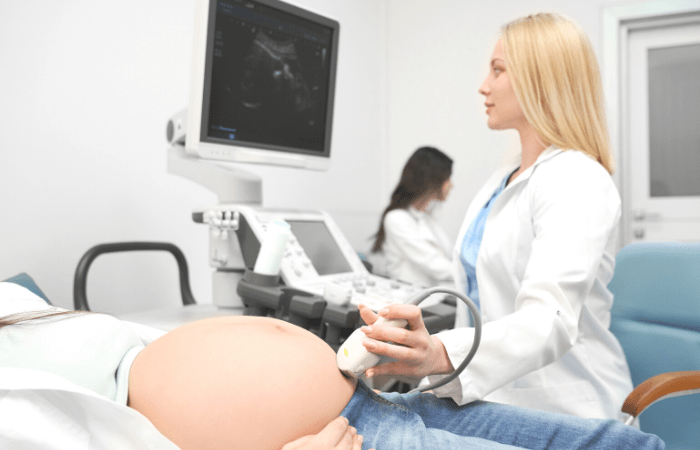Last updated on September 28th, 2021 at 01:21 pm
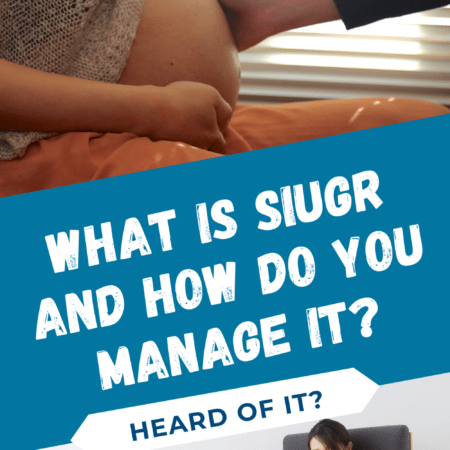

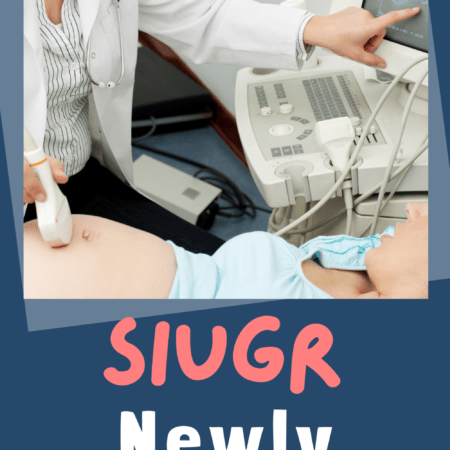
Did you just get a sIUGR diagnosis? Not sure what to do? Read all about sIUGR and how it might affect your twin pregnancy.
All content on this Website, including medical opinion and any other health-related information, is for informational purposes only and should not be considered to be a specific diagnosis or treatment plan for any individual situation. Use of this site and the information contained herein does not create a doctor-patient relationship. Always seek the direct advice of your own doctor in connection with any questions or issues you may have regarding your own health or the health of others.
Twin pregnancy is so exciting. It’s a magical experience. Carrying one baby is incredible, but two is a new ballgame. Trust me. I’ve done both.
The flip side is that it can be stressful. It can be scary. The risk of complications is considerably higher with twins. That’s not to say that it is always going to end with premature birth or tons of equipment and a hospital stay. On the contrary, many twin pregnancies are completely “normal” and “by the book”. Those stories are great. But they are not my story.
My twin pregnancy started off great. I was young. Too young to be scared of complications. I half-listened when my obgyn told me that the risk of complications was slightly higher since I was having twins. I was in great health and felt fantastic. Things shifted during my 28 week appointment and about a week later I found myself at a local perinatologist office where they completed a 2 hour scan.
Following the scan, I was officially diagnosed with selective Intrauterine Growth Restriction, or sIUGR (sometimes now called Fetal Growth Restriction) as a result of placenta insufficiency and a 2 vessel umbilical cord. After spending a few weeks in the hospital I delivered my girls at 32 weeks and 5 days. Baby A weighed 4 and a half pounds and baby B wasn’t even 3 pounds! That was a pretty big difference and it was definitely noticeable.
So how did this happen? What is sIUGR, really? What can you do if you receive this scary diagnosis?
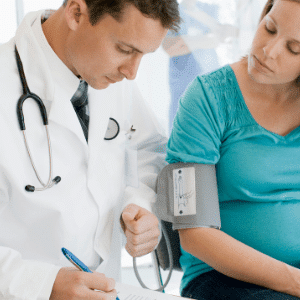
What is sIUGR?
Selective intrauterine growth restriction or sIUGR can be diagnosed as early as 16 weeks. In order to be officially diagnosed the weight discrepancy between the 2 babies must be a minimum of 20% and the affected baby will have a weight that falls below the 10th percentile.
I know for my twins, we didn’t even suspect sIUGR until my 28 week appointment and it seemed to come out of nowhere, although I was having regular growth scans. So, it can be diagnosed any time after your 16th week of pregnancy.
What causes IUGR in twins?
As it turns out the causes of sIUGR are different depending on whether you are having monochorionic twins or dichorionic twins. It is a more common condition in monochrorionic twins but it CAN and DOES happen in dichorionic twins. Remember when I said I had it with mine?
If you are having dichorionic twins, sIUGR can be caused by placenta insufficiency. Placenta insufficiency is when one baby is failing to get enough nutrients and oxygen. The silver lining is that the other twin is completely unaffected since they do not share the placenta and actually have their own circulatory systems as well.
In monochrorionic twins, sIUGR is caused when twins share a placenta but one twin gets less blood and nutrients. The biggest difference with Mono sIUGR is that BOTH twins are actually at risk. In these cases, the growth restriction could progress as time goes on and it could actually lead to fetal death. If the affected twin passes away, the unaffected twin could actual suffer due to the shared placenta.
Either way, it is imperative that this condition is diagnosed and dealt with appropriately as swiftly as possible.
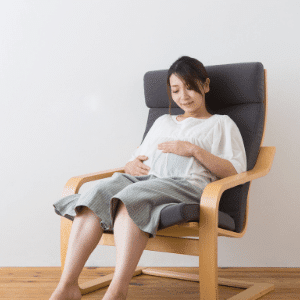
What is Type 3 sIUGR?
SIUGR can be categorized as type 1, 2, or 3.
Type 1 is characterized by a consistent forward flow in the umbilical artery of the affected twin. These cases most often result in delivery between 34 and 35 weeks gestation. If diagnosed, your medical team will be watching closely for progression to type 2 or 3, which can be more unpredictable and more dangerous.
Type 2 is when either persistent absent blood flow or persistent reversal of blood flow in the umbilical artery of the growth affected twin. These cases more often result in mom delivering some time between 26 and 32 weeks.
Type 3 is less predictable than type 1 or type 2. The blood flow can be absent and then switch to reversal and then to forward and then back again. This is monitored very closely by ultrasound in order to watch for the affected twins condition to deteriorate. The average age of delivery in type 3 sIUGR is 30 weeks and the affected twin may not survive in about 15% of all cases and when that happens, the unaffected twin is put at risk as well.

Do Babies with IUGR move a lot?
Babies with growth restriction do not move any more or any less than their unaffected counterparts, as a general rule. If your notice a change in movement, you should talk to your provider.
It is generally a good sign that your baby is moving around a lot. We all know that fetal movement is a good sign. Note any changes and discuss them with your doctor. If you have already been diagnosed with growth restriction, you will want to call your doctor if you notice changes right away instead of waiting for your appointment, even if it’s only a day away.
It’s better to be safe than sorry when it comes to the health of your twinnies.
What happens if you have IUGR?
This will largely depend on the severity of the IUGR. In the worst cases, it can be life-threatening. In the majority of cases, however, the most common risk would be premature delivery. We know that most babies with sIUGR are born early and that comes with its own set of challenges, including NICU stays.
The most important thing is to keep up with your prenatal care. Go to all your scans and follow-ups. And take the medical advice seriously. Of course, a second opinion never hurts, but don’t brush it off. If your OBGYN tells you to go see a perinatologist for a 2-hour scan, take the time off off work and make it happen. The scans really are necessary and life-saving for your babies.

How serious is sIUGR?
If the case is severe the seriousness of the growth restriction can be life-threatening. But we know that more often than not, babies are born a bit early and the smaller twin actually catches up in size before they reach age 2.
Can you have a healthy baby with IUGR?
Let’s look at it this way. The longer a baby stays in the mothers’ womb, the better. During pregnancy, each day is a milestone when you are trying to keep your babies in. Other than prematurity on it’s own, there are some other complications that may cause problems for the affected twin such as difficulty eating, low blood sugar, or difficulty maintaining their body temperature. This may lead to one or both of your babies staying in the NICU for a time to mature these systems.
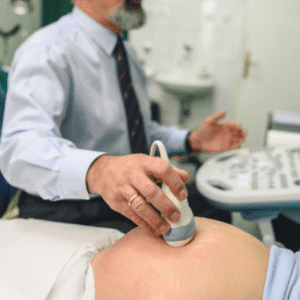
How is sIUGR treated before birth?
With type 1 and almost all dichorionic twins, the treatment is close monitoring. Your babies will be monitored with ultrasound as your pregnancy progresses to make sure the provider can intervene as soon as necessary.
There are also 2 minimally invasive surgical options that you might need to consider as well. Selective cord occlusion or fetoscopic laser ablation are the 2 that you would need to discuss at length with your doctor as they may or may not be right for you and your pregnancy.
Delivery is more commonly the treatment that is used when sIUGR is diagnosed past 24 weeks. Mom is closely monitored and when it starts to look like the affected twin is suffering, or the unaffected twin is now being impacted in Mono Mono or Mono Di twins, delivering the twins early may be the best option. Once the babies are born, the NICU staff can work stabilize them individually.
In my case, we started watching at 29 weeks in the hospital and every day we made it through still pregnant was a victory. Making it all the way to 32 weeks and 5 days was a huge blessing and my girls were both released from the NICU at 2 weeks old with no lasting effects from their emergency c-section and in utero diagnosis.

Hearing any type of diagnosis during pregnancy can be scary and overwhelming. SIUGR can sound hopeless but it’s really not. Medical science has made so many advances and we should absolutely take advantage of every test, every tool, and every treatment available.

